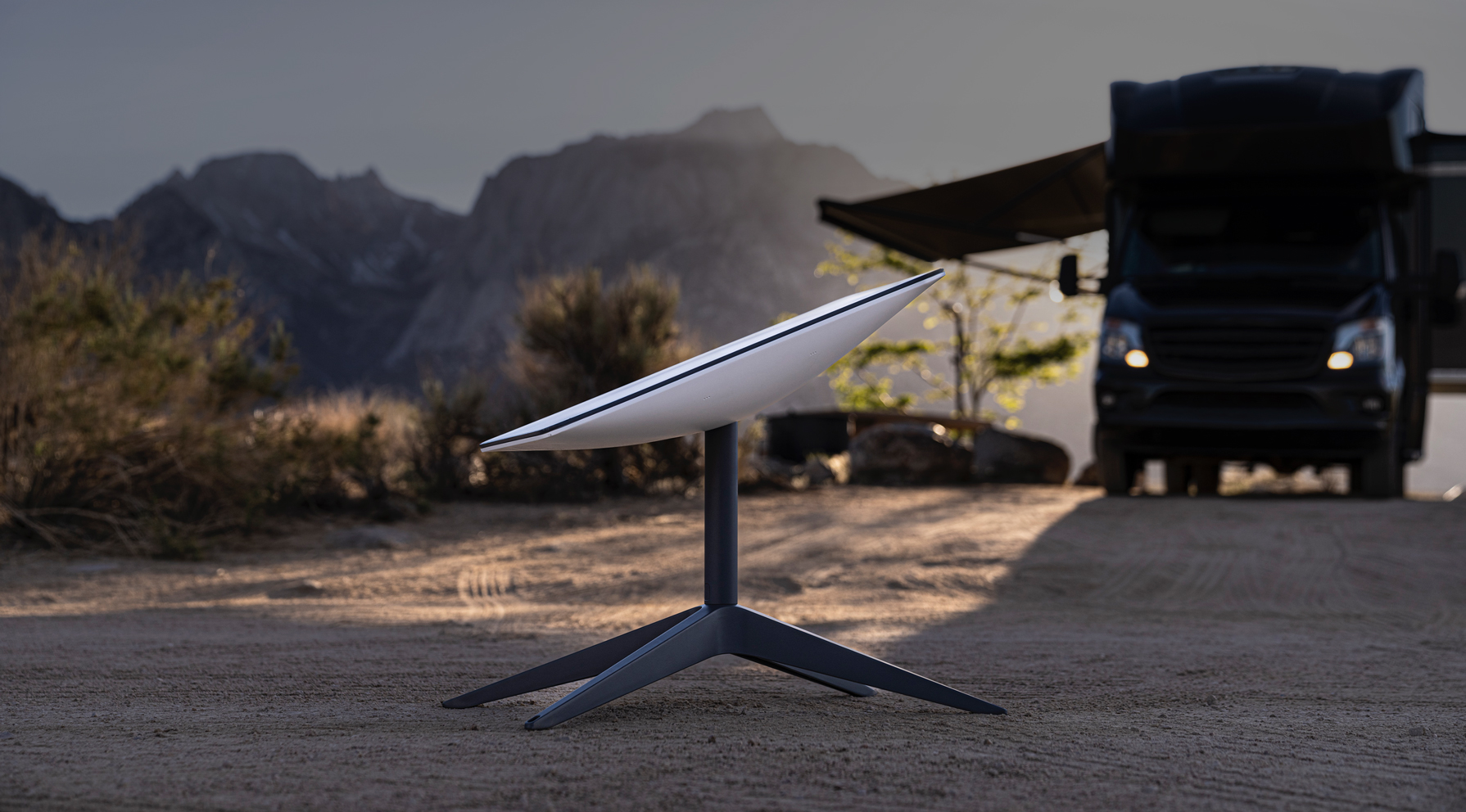
































I started seeing them around the marina a few months ago: rectangular dishes gazing skyward in some common prayer. You hear the whispers around the dock: "Did you get it yet?" You can almost feel the excitement in the air.
Starlink has arrived, and Starlink RV has attracted the attention of the boating and adventure crowd. That's because it solves a host of problems unique to folks who live or recreate on boats or other vehicles for long weekends or months on end.
Also: Starlink US residential customers are getting a limit on their high-speed internet
Is it perfect? Nope, but it's become good enough that we abandoned our existing internet service and plan to use it full-time, whether at dock or on the move.Marinas and campgrounds have notoriously shabby Wi-Fi, and cell coverage is often abysmal owing to a scarcity of towers and impeding multistory housing. Fewer marinas have wired broadband connections than in the past, and boats (like RVs) are designed to move. Most internet plans aren't.
A point of clarity here: There is a dedicated maritime version of Elon Musk's satellite internet venture, but with a$10,000 equipment fee and$5,000-per-month service plan the target market is high-end yachts and charter boats, and we're not that classy.
The pricey maritime version covers users far offshore in a global beltway that extends north from the equator, and if you're an oligarch who managed to hang onto your megayacht, that's great news.
Also: I tested the Insta360 Go 2 action cam on my WWII-era sailboat. It blew me away
For the rest of us, Starlink RV has generous coverage of the coastline and inland portions of the US, Canada, and Mexico for a more reasonable$599 equipment fee and a pay-as-you-go$135-per-month service plan that allows you to travel anywhere in the service area.
In Marina del Rey, where our WWII-era sailboat Lindy is berthed, internet service has traditionally been cobbled together by boaters. LTE coverage is hit-or-miss due to the geography of the marina and the surrounding buildings. LTE boosters help some, but I've found those to be inconsistent.
Our area is densely populated and networks seem constantly strained. Wi-Fi in our facility is available but it's slow and glitchy, and there's no hard line maintained at the dock. The only serviceable alternative is a mom-and-pop ISP that provides line-of-sight service via a tower on one of the tallest buildings in the area. For$130 per month we get download speeds that are often in the 6-10Mbps range and under 1Mbps uploads.
Also: How to test your internet speed the quick and easy way
Does that make you wince? It makes me wince ... especially every time I pay the monthly bill. Starlink RV offers a faster alternative at a similar cost, so I acquired one of those dishes and tested the service myself.
| Service availability | >99% |
|---|---|
| Expected download | 50-200Mbps (5-100Mbps in congested areas during peak usage) |
| Expected upload | 10-20Mbps (1-10Mbps in congested areas) |
| Latency | 20-40 ms |
| Data caps | None |
| In the box | Starlink dish and base, router, antenna cable, power supply |
| Plan | Pay as you go |
SpaceX has launched and is continuing to add to a constellation of thousands of low-earth orbit satellites. Customers use ground transceivers to send and receive signals, and those are sent to a Starlink Wi-Fi router.
Also: Everything to know about Elon Musk's satellite internet service
Starlink released the RV version of its satellite-based internet service in May. Unlike residential Starlink orders, which have been hampered by wait times, Starlink RV has been available for immediate purchase since launch. As of this writing you can buy it now and it'll show up in a week or so.
What's the rub? Starlink RV doesn't require a service address the way residential service does, but service is deprioritized compared with residential customers, meaning at peak usage RV users get lowest priority. There's also a$25-per-month portability fee, which brings the total monthly contract to$135. The equipment fee is$599 and shipping was around$50 to get the unit to Marina del Rey, California.
There are no long-term service contracts and the equipment fee is refundable within one month if you're not satisfied. Currently, customers receive a second-generation "Dishy" motorized dish. The more expensive maritime service is now shipping with a newer-generation flat dish, which sits horizontally and remains stationary (no motors).
The second-generation dish is bigger than you might expect, but it sits comfortably on Lindy's deckhouse roof.
Greg Nichols/The coverage map below is current as of this writing (check here for updates). If you live and plan to travel in the US, Canada, or Mexico, coverage is superb. Coverage in South America is sparser, though service is available in Chile and southern Brazil, as well as Medell
 Tags chauds:
Notre processus
Maison & bureau
réseautage
Haut débit
Tags chauds:
Notre processus
Maison & bureau
réseautage
Haut débit